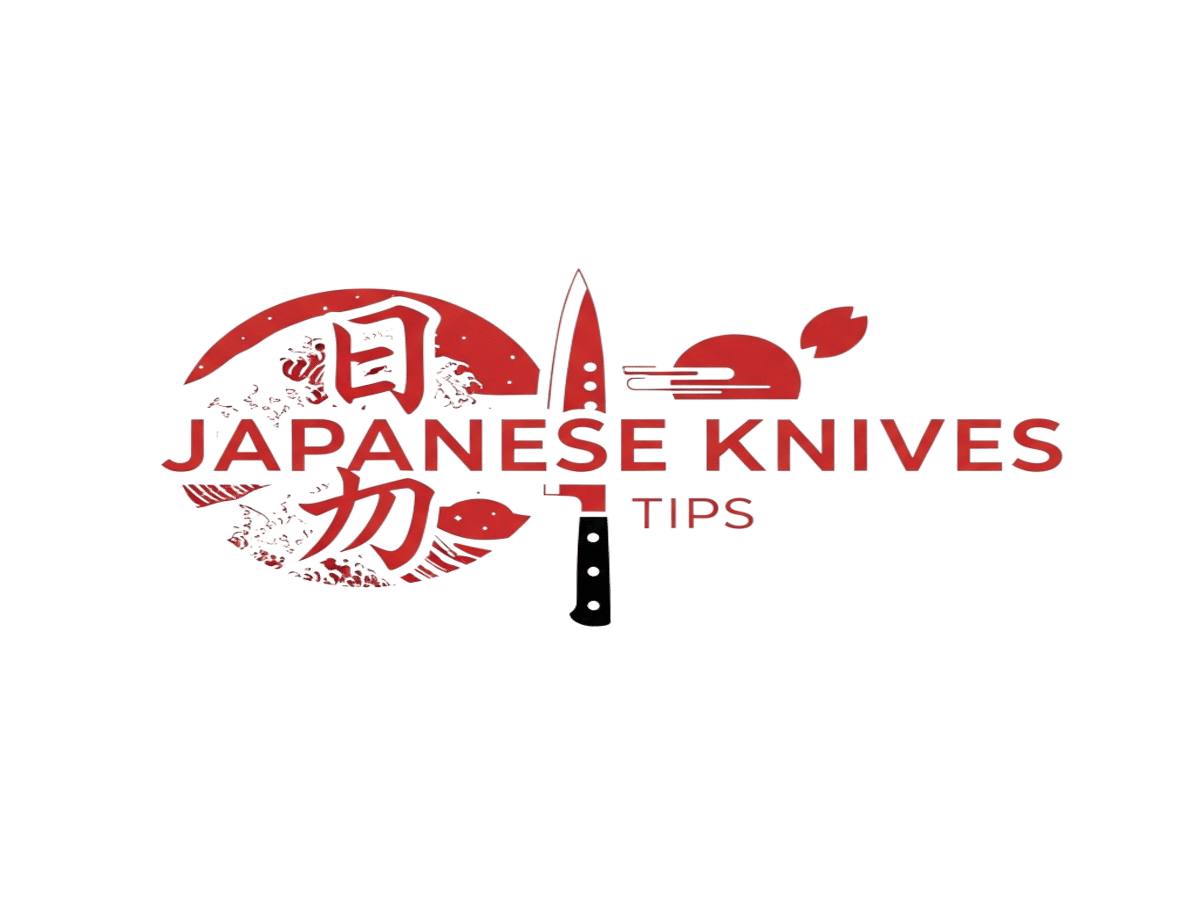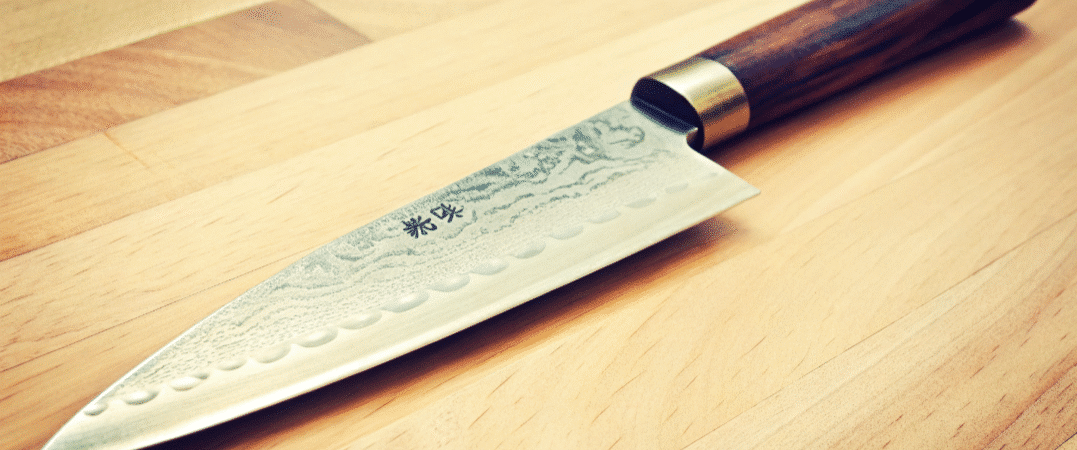When I first got into cooking, I didn’t think much about the knife I was using. But once I tried a Japanese knife made from carbon steel, everything changed. These knives cut clean and hold their edge longer than most others I’ve used. They have a good weight, giving you comfort and control during prep work, making tasks quicker and easier.
The beautiful knife design, with its elegant appearance and attention to detail, reflects the quality craftsmanship typical of Japanese carbon steel knives. If you want a knife that’s sharp, solid, and built to last, a Japanese carbon steel knife is worth checking out.
- Why I Love Japanese Knives
- What’s High Carbon Steel Anyway?
- What Makes Carbon Steel Knives Different?
- Different Types of Japanese Chef Knives
- Handle Style and Material
- Blade Hardness and Edge Retention
- Picking the Right Knife for You
- Japanese Knife Tests and Reviews
- Customer Reviews and Feedback
- How to Take Care of Your Knife
- Sharpening Basics
- Keeping Your Knife in Shape
- Why Japanese Chef Knives Stand Out
- Final Thoughts
- FAQ
- How do I keep my Japanese carbon steel knife from rusting?
- Can I use my carbon steel knife on bones or frozen food?
- How often should I sharpen my Japanese chef knife?
- Can a Japanese carbon steel knife slice through tomato skin without crushing it?
- Is a Japanese carbon steel knife good for cutting sweet potatoes?
Why I Love Japanese Knives
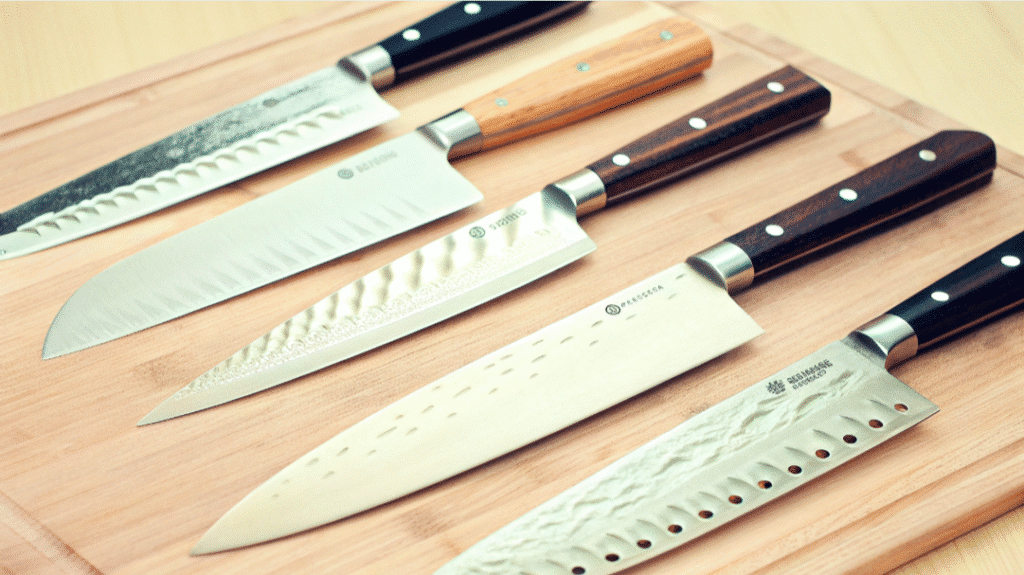
If you’ve ever spent time in the kitchen, you know a good knife makes a world of difference. Japanese knives have a reputation for being sharp, durable, and just plain well-made. I’ve been using them for years, and honestly, they make cooking more enjoyable. These knives aren’t just tools; they’re reliable partners that help you get the job done right.
What sets Japanese knives apart is their design and the materials used. Japanese style knives are known for their high blade hardness, precision craftsmanship, and unique design features such as single-bevel sharpening and traditional Japanese steel alloys. Many are made with high carbon steel, which means they hold a sharp edge longer than most other knives. The great quality of Japanese knives comes from their superior materials and meticulous construction, resulting in excellent cutting performance and lasting durability. Plus, they often have a unique look and feel that just works well in your hand.
What’s High Carbon Steel Anyway?
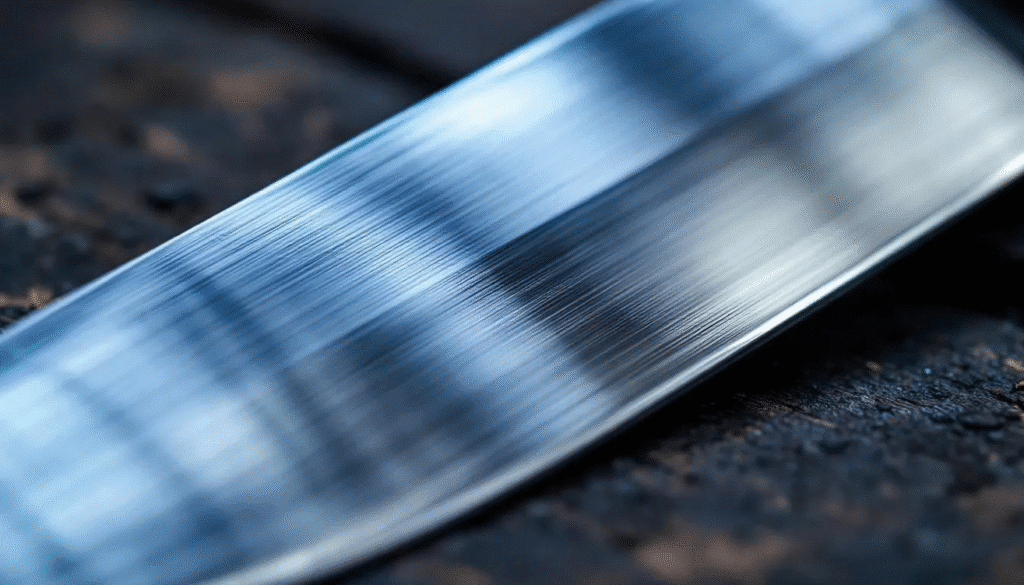
High carbon steel is a type of steel with a higher carbon content—usually between 0.5% and 1.5%. That extra carbon makes the steel harder and lets the blade stay sharp longer, improving edge retention. Steels with more carbon generally offer superior hardness and edge retention compared to those with less carbon, but they can be more prone to rust and chipping. This is why many Japanese chef knives use high carbon steels for their excellent sharpness and performance.
But here’s the catch: high carbon steels can rust if you don’t take care of them and require extra maintenance to prevent corrosion and maintain their performance. So, you can’t just toss them in the dishwasher or leave them wet. A quick hand wash and dry, plus a little oil now and then, keeps them in good shape. I usually use camellia oil—it’s easy and works well.
What Makes Carbon Steel Knives Different?
Carbon steel knives are known for their sharpness. The knife’s weight is carefully considered, contributing to comfort and control during use. They feel lighter and easier to handle compared to some other knives, which helps when you’re doing lots of chopping or slicing. A perfect balance in the design reduces fatigue and improves precision, making them ideal for extended kitchen tasks. The thin blade allows for more precise and delicate cuts, especially when slicing vegetables or fish. They also resist corrosion better than some other steels, but they can be a bit more brittle. That means you need to be careful not to hit bones or drop them.
With the right care, these knives can last a long time and become your go-to in the kitchen.
Different Types of Japanese Chef Knives
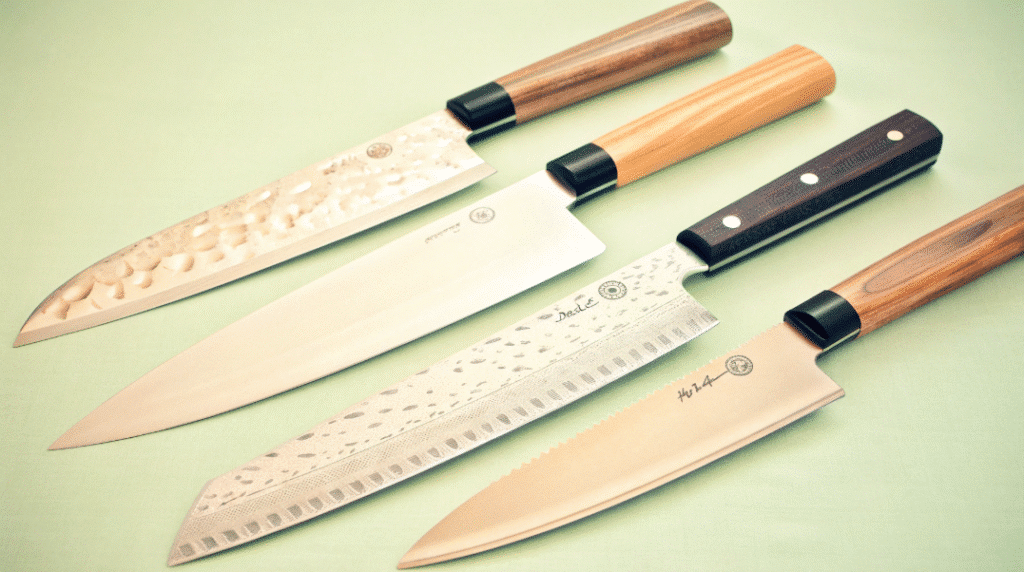
Japanese knives come in several shapes, each made for specific tasks:
- Gyuto: This is the classic Japanese chef’s knife and a favorite among chef’s knives. Often available in 8 inch or 8 inches blade length, the Gyuto offers excellent versatility for both professional and home cooks. Its slightly rounded blade makes it ideal for rock-chopping techniques, while the sharp edge easily slices through meat, vegetables, and more. The blade material, often high-quality carbon steel or stainless steel, ensures lasting sharpness and durability.
- Santoku: Smaller and lighter than the Gyuto, the Santoku is perfect for chopping and mincing. Its rounded blade also allows for smooth, precise cuts and efficient rock-chopping, making it a versatile choice for various kitchen tasks.
- Nakiri: A straight blade designed mainly for cutting vegetables, the Nakiri excels at clean, straight slices through produce.
- Deba: A heavy-duty knife for cutting through bones and tougher stuff, the Deba’s shorter blade length and robust blade material make it suitable for butchery and filleting.
Picking the right one depends on what you cook most, but many people like having a couple of these around. The blade length of chef’s knives, such as 8 inches, impacts control and versatility—longer blades are great for slicing larger items, while shorter ones offer more precision. Blade material also plays a key role in sharpness, edge retention, and ease of maintenance.
Handle Style and Material
Japanese knife handles matter.
They really do.
The style and material can change everything. How does your knife feel? How does it perform? The handle decides.
Traditional Japanese knives use special woods. Pakkawood is popular. So is Micarta. They look beautiful. They feel great too. You get a secure grip. Some handles are octagonal. Others are D-shaped. Why? More control for you. They fit your hand naturally. Round handles work too. Contoured ones feel universal. Which do you prefer?
Ergonomic handles are big hits. Home cooks love them. Professional chefs do too. Here’s why: Less fatigue during long prep sessions. Your hands stay happy.
Choosing a handle material is important.
Really important.
Wooden handles give you that classic look. Authentic feel too. But here’s the catch: They need more care. You want to maintain their appearance? You’ll work for it. Rust resistance? That takes effort too.
Stainless steel handles are different. Low maintenance is their thing. Excellent durability too. But do they have that traditional vibe? Not really.
What’s the right choice? Personal preference wins. Here’s what matters: Does it feel good in your hand? Does it complement the knife’s balance? Get these right and you’re set.
A well-chosen handle makes your Japanese knife a joy. Every single day.
Blade Hardness and Edge Retention
Want to know what makes Japanese knives special? It’s the blade hardness. And that impressive edge retention. Most Japanese knives? They’re crafted from high carbon steel. This gives them something amazing. A sharper edge. They stay knife sharp longer too. Way longer than many Western style knives. The hardness of these carbon steel blades gets measured. How? On the Rockwell Hardness Scale. Japanese knives typically score between 55 and 62. This higher rating means something big. The blade can achieve a razor sharp edge. Perfect for making precise cuts. Slicing through ingredients with ease.
But here’s the thing. With great sharpness comes a trade off. Harder blades can be more brittle. So it’s important to avoid cutting into hard objects. Don’t use the knife for tasks it’s not designed for. Want to keep that sharper edge in top shape? Regular sharpening with a whetstone is key. Or use sharpening steel. Proper care matters too. Store your knife in a dry place. Keep it clean. This will help prevent rust. Keep your high carbon steel knife performing at its best. With the right maintenance? You’ll enjoy the superior edge retention. And cutting performance. That’s what makes Japanese knives a favorite among chefs and home cooks.
Picking the Right Knife for You
Choosing a knife can feel overwhelming, but it boils down to a few things. There are many types of kitchen knives available, each designed for specific tasks like slicing fish, chopping vegetables, or cutting meat.
- Steel type: High carbon steel is sharp and holds its edge well, but needs care.
- Blade shape and size: Think about what you’ll use it for. A longer blade helps with slicing large items; a shorter one gives more control. Pay attention to blade length and the cutting edge technology or design, as advanced features can improve sharpness and durability.
- Handle: Look for something comfortable and secure. Wood or composite handles are popular because they feel good in the hand.
Balance matters too. A well-balanced knife feels natural and reduces fatigue when you’re prepping for a while. Look for great knives that combine quality materials, expert craftsmanship, and reliable performance.
Japanese Knife Tests and Reviews
Want the best Japanese knife?
Look at tests and reviews.
They help a lot.
Professional chefs test them. Home cooks do too. They check sharpness. They check edge retention. They check comfort. High carbon steel blades? They’re great. Ergonomic handles? Even better. They give you clean cuts. They give you precise slicing. They feel good in your hand. Even during long use.
What about brands?
Shun gets mentioned a lot. So does Global. Tojiro too. And Miyabi. Each brand has its own style. Each has its own take on Japanese knives. Some knives? They stay sharp forever. Others? They balance perfectly. Some are just easy to use. Reading different reviews helps. You’ll find what fits your needs. Want something professional-grade? There’s a knife for that. Want something budget-friendly? There’s one for that too. Pay attention to real kitchen performance. How does it hold up over time? This way you pick right. This way you get the Japanese knife that’s perfect for you.
Customer Reviews and Feedback
Customer reviews tell the real story.
And what a story it is.
Japanese knives are sharp. Really sharp. Users love them. They call them the best knives ever. The edge stays sharp for ages. The craftsmanship? Amazing. Traditional methods. Quality materials. Unique designs that catch your eye.
But here’s the thing. Japanese knives need care. More care than other knives. They can rust if you’re not careful. The edge needs attention. Regular sharpening is a must. Store them dry. Keep them safe. Some reviews mention this. It’s the price you pay for quality. But is it worth it? Most say yes. Reading feedback helps you learn. You see the good stuff. You see the drawbacks too. You learn about customer service. Different brands offer different experiences. This insight matters. It helps you choose smart. You get a knife that fits. A knife that matches your cooking style. A knife that works for you.
How to Take Care of Your Knife
Taking care of a carbon steel knife isn’t hard, but it does require some habits:
- Always hand wash your knife with hot water and a mild soap.
- Dry the knife immediately after washing—never leave it sitting wet or let it air dry to prevent rust.
- Keep your knife sharpened to maintain optimal cutting performance and precision.
- Occasionally apply a thin layer of camellia oil or food-safe mineral oil to prevent rust.
- Store it in a dry place, ideally in a knife block or on a magnetic strip.
- Avoid chopping hard objects like bones or frozen foods to prevent chipping.
Sharpening Basics
Sharpening keeps your knife working its best. Carbon steel knives are easier to sharpen than stainless steel blades, which is nice. A properly sharpened knife ensures that food is sliced cleanly and efficiently.
- Use a whetstone for the best results.
- You can also use a honing rod or a leather strop to keep the edge fresh between sharpenings.
- Don’t rush it—take your time and be gentle to avoid damaging the blade.
Keeping Your Knife in Shape
Besides sharpening, regular cleaning and drying are key. Applying oil helps improve corrosion resistance, especially if you live in a humid area.
If you have a knife made from high carbon stainless steel, you’ll benefit from increased corrosion resistance due to the chromium content, which means less frequent oiling compared to traditional carbon steel knives. However, both types still require proper care to maintain their edge and appearance.
Also, avoid leaving your knife left wet or exposed to acidic foods for too long. These can cause rust spots or discoloration.
Why Japanese Chef Knives Stand Out
Japanese chef knives combine high carbon steel with expert craftsmanship. These knives are crafted from a variety of knife steels, each with unique chemical compositions that affect hardness, wear resistance, and corrosion resistance. The result is a blade that’s not only sharp, durable, and balanced, but also incredibly sharp—allowing for precise slices and making prep work faster and easier.
Whether you’re a pro or just like cooking at home, a Japanese chef knife can be a great addition to your kitchen. They’re beautiful, practical, and built to last.
Final Thoughts
If you want a sharp knife that feels solid and lasts, a Japanese knife made with high carbon steel is worth considering. Just remember to care for it properly, and it’ll reward you with years of great cutting performance.
No fancy talk here—just a solid knife that works well and feels good in your hand. That’s what I look for, and what a good Japanese knife delivers. Happy cooking!
FAQ
How do I keep my Japanese carbon steel knife from rusting?
Just don’t leave it wet. Wash it by hand with warm water and soap, then dry it right away. Every once in a while, rub a thin layer of camellia oil or mineral oil on the blade. That keeps rust away and your knife happy.
Can I use my carbon steel knife on bones or frozen food?
It’s better not to. Carbon steel blades can chip or get damaged if they hit hard stuff like bones or frozen items. Save those tougher jobs for a different knife and keep your carbon steel blade sharp and intact.
How often should I sharpen my Japanese chef knife?
When it stops cutting like it used to—maybe when slicing tomatoes feels tough or the knife drags instead of slicing clean. Use a whetstone for best results, and a honing rod or leather strop can help keep the edge fresh between sharpenings.
Can a Japanese carbon steel knife slice through tomato skin without crushing it?
Yes, a Japanese carbon steel knife is known for its sharpness and precision, making it excellent for slicing through delicate tomato skin smoothly and effortlessly without crushing or tearing the tomato.
Is a Japanese carbon steel knife good for cutting sweet potatoes?
Absolutely. The sharp, strong blade of a Japanese carbon steel knife can handle dense, fibrous vegetables like sweet potatoes, allowing you to slice through them with precision and ease.
